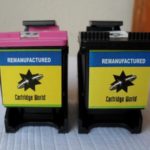The science of lighting has been taking leaps into the future over only the past few years. We’ve yet to even fully realise the potential of LED lights and already they’ve massively improved the industry. By replacing fluorescent lights with led panel lights you could save money and energy and improve the quality of lighting in your building.
We’ve discovered so many uses for LEDs. We’re using them in cars, traffic lights, domestic lights and almost all of our electronics and we’ve found so many ways of improving them and opening up possibilities. LIFX (Life X) LEDs are just one example of the ways we’ve utilised electronic. LIFX LEDs can be programmed to a device with wifi and controlled manually. We can change the colour and brightness all at the touch of a button and the settings work on a scale, so there are almost infinite options of how bright or colourful we want them to be. You can use your phone o you watch to change the settings however and whenever you want.
Some scientists in Manchester even found a way to make LEDs even better. They discovered Graphene – a modified version of carbon – that has managed to make LED lights even more efficient. By coating the filament of an LED bulb with graphene the lightbulbs don’t heat up as much or as quickly as they usually would, which means that they will have a much longer life span. Graphene LEDs can also produce the same amount of light as a normal LED but with a much lower wattage, which means they don’t use up as much energy. After Graphene has solved most of the problems regarding LEDs it seems impossible to think about an alternative that could possibly be any better.
There is another light source other than LEDs that people have a lot of faith in for the future of lighting, however. Laser diodes are smaller LEDs, so there’s the possibility that technology that utilises lasers might be even more compact than most of our current devices. Laser diodes can also produce as much as 1,000 times more light than an LED while also only using 2/3rds of the energy that a LED uses. Imagine being able to light an entire house with just one bulb.
Already we’re seeing lasers being used as LED alternatives. The new BMW ‘i8’ uses lasers for headlights. White light is produced by combining phosphor with a blue laser and it’s believed with the headlights can long outlive the car itself. Work is underway to see if this technology could possibly be used in cinemas and everyone is expecting even more brilliant possibilities to open up as we learn more about what lasers are capable of.
For now, LEDs are at the top of the industry, with so much undiscovered potential waiting to be realised. But, who knows how long that could last. The industry is moving so quickly these days that there’s no telling how long it will take for something amazing to become something outdated.






